The KDE Plasma desktop is an attractive and feature-rich environment to use. It provides a fluid interface with a touch of elegance that leaves many other Linux desktop environments in the dust. The desktop’s laser focus is on simplicity, as well as making your life easier.
As a system of tightly integrated user interfaces, the KDE Plasma desktop provides the necessary software and hardware configuration to create an environment that the majority of users will find appealing.
The KDE desktop is one of the most popular desktop environments out there. However, many users complain that the interface is not friendly to newbies but it really does come down to a matter of opinion and familiarity with other desktops outside Linux.
The KDE Workspace offers a more intuitive entry point to the desktop and this has been the general consensus hence the popularity of the desktop environment.
1. Nitrux OS
Nitrux OS is a Linux distribution that is designed specifically for everyone? Yes, that’s exactly what’s on their homepage “A Linux for Everyone“.
It’s a lightweight operating system that runs on just about any Linux-supported device, and it’s focused on having a fast and responsive experience. It’s optimized for resource savings, so that you can run programs, such as games and multimedia, without slowing down the device.
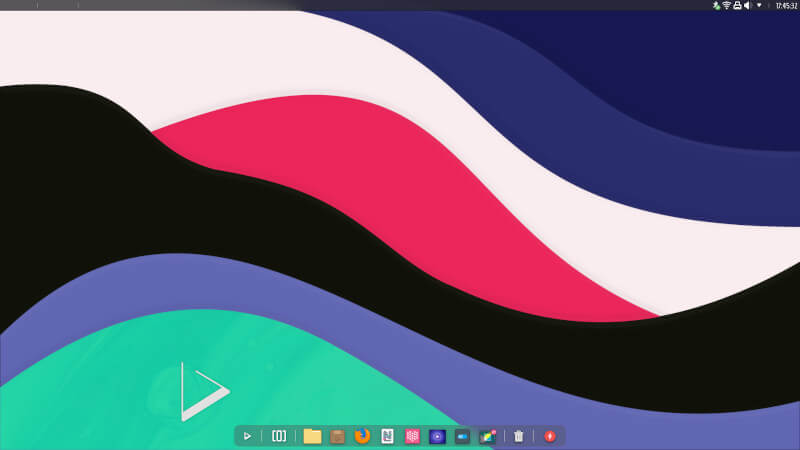
Nitrux OS has also been made compatible with the Raspberry since 2019 further validating its acclaim of distribution for everyone. As one of the more recent KDE contenders on this list.
Nitrux OS is arguably challenging in its presentation as it combines the power of the Calamares installer with MauiKit Applications coupled with the NX Desktop and NX firewall based on the KDE Plasma 5 desktop.
2. Manjaro KDE
Manjaro Linux is the stable, preferred, and most popular Arch Linux distribution, that has been designed to provide a consistent and fast system that can also be used for a professional workstation or as a server.
Manjaro Linux is based on Arch Linux, which is a very user-friendly Linux distribution, but with faster performance. It’s a great choice for those who want to use the latest releases of software applications and the most recent trends in computer operating systems.
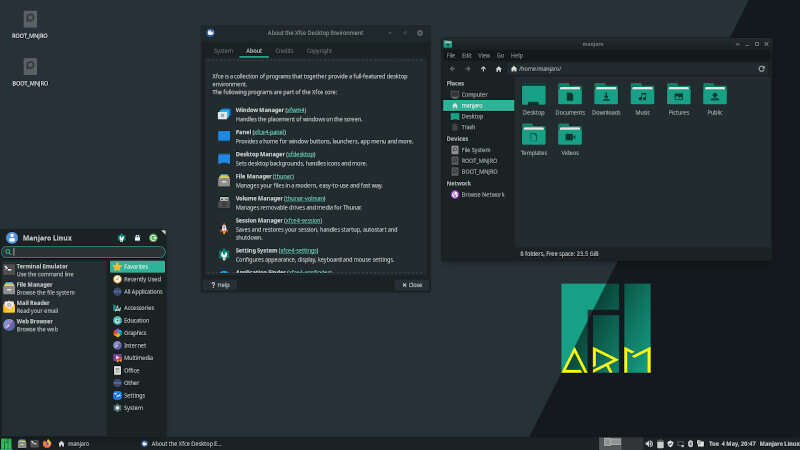
Manjaro KDE is a flavor from the Linux distribution variations under Manjaro that uses KDE’s Plasma desktop environment to provide “fast and easy” installation and management. The Manjaro Linux project was launched in October 2013, with the first stable release, Manjaro KDE 16.12.1, released on 28 January 2014.
Running a Manjaro KDE Linux system is quite pleasant because it has all the necessary software preinstalled making your system ready to use in no time.
Additionally, you can install your favorite applications like a word processor, spreadsheet, image viewer, and more. If you’re looking for a Linux distribution that works on hardware with different types of processors, Manjaro Linux is just the right choice for you.
3. Garuda Linux
Garuda Linux is a GNU/Linux distribution that is based on KDE, the popular desktop environment. It has been designed to be easy to use by new users and experienced users alike.
It was started in 2000 by Nissim Garuba with the goal of making a stable, secure, and easy-to-use desktop distro for both experienced users and beginners.
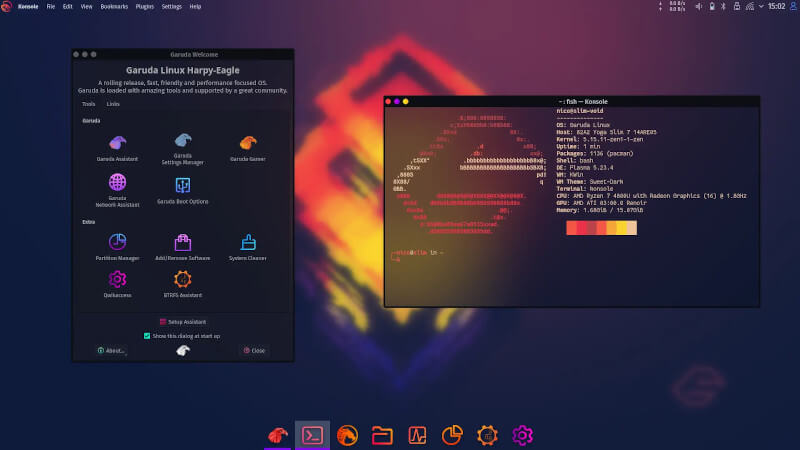
Garuda Linux has taken the whole Arch Linux business very seriously as the distribution is pretty much the only one on the list with three flavors of KDE all based on Arch Linux.
One for pentesting, another for essential work, and a third for gaming with designated gaming tools you otherwise would not get preconfigured anywhere else.
Garuda Linux prides itself in being able to provide every user a customized experience that can be further extended to provide newbies with an experience close to the operating system they may have used in the past.
4. MX Linux
The MX Linux organization is a group of enthusiasts that are focused on creating a flavor of Linux that goes well with the KDE Plasma desktop environment. With a Ubuntu base, you can drastically upscale your experience by getting access to a plethora of applications within the Ubuntu sub-ecosystem.
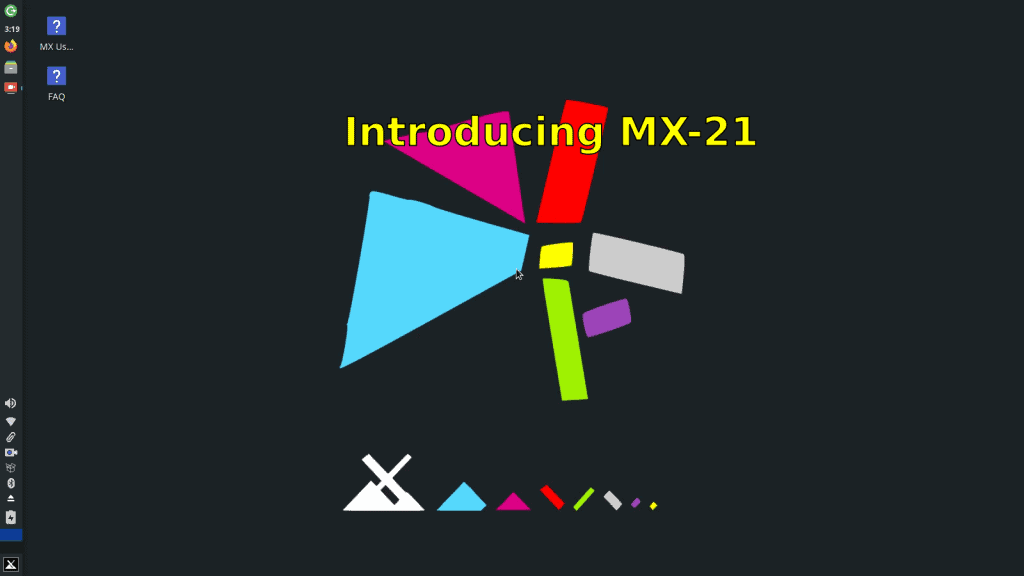
MX Linux is different from other Linux distributions because it’s a killer custom desktop experience that’s perfect for beginners. Basically, it’s a great distribution to start with if you want to learn how to use Linux without breaking a sweat.
5. Kubuntu
Kubuntu is a user-friendly, open-source distribution that offers a solid Ubuntu-based operating system with the KDE Plasma desktop.
The OS is a free alternative to Windows and is perfect for Linux newcomers. Considering it ships with the KDE Plasma Desktop by default, it has been the perfect operating system for Linux junkies for years and it’s still one of the best choices in the market.
Perhaps you may refer to Kubuntu as the OG when it comes to distributions that originally started out with the K Desktop Environment.
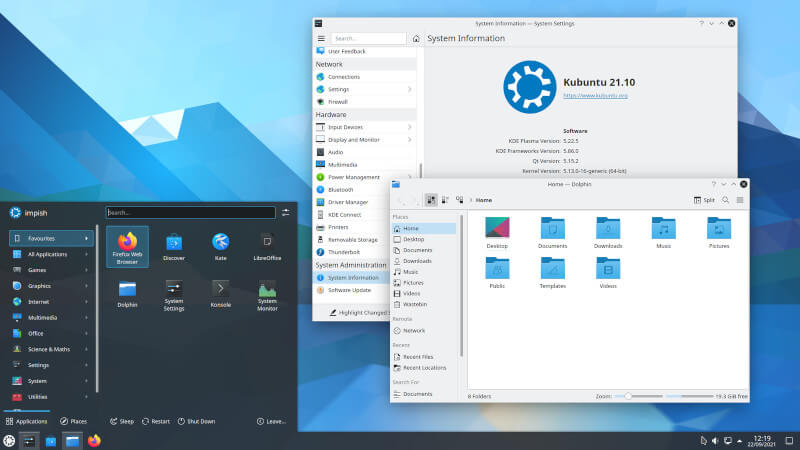
Kubuntu is easily one of the better choices on this list for beginners as it has the Ubuntu base which essentially means you will be able to get a ton of support from the wider Ubuntu community.
If you’re to ever run into trouble with your system. Other bases like Arch Linux require you to be an intermediate user for effective use of the system.
6. KaOS
KaOS is a versatile distribution that can be used for many different purposes and different user bases. It is similar to the variations of KDE Linux distributions on this list with the added advantage of extra functionalities that will easily win over a beginner coupled with the laser focus on Qt and KDE that easily wins over professionals as well.
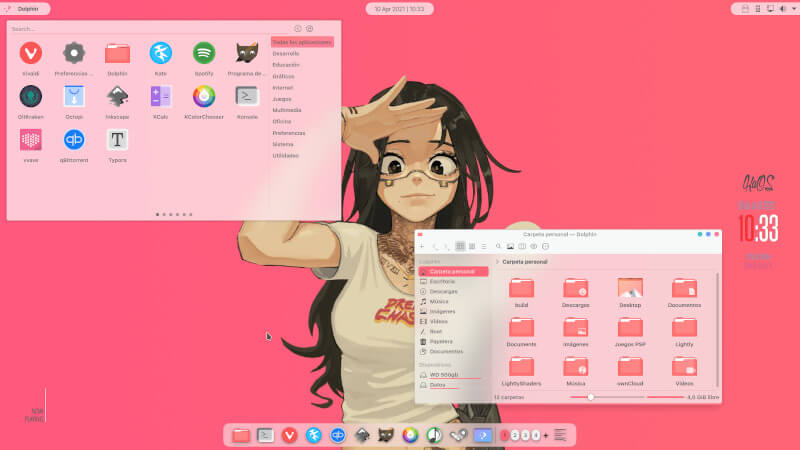
As a lightweight KDE distribution, it is especially ideal for those who want a more minimalistic look while still having the full functionality of a traditional desktop environment.
KaOS as an operating system is one of the best base environments for running KDE Plasma. Unsurprisingly, KaOS uses the Linux kernel, but it also comes with a few changes made specifically to improve the user experience.
7. KDE Neon
KDE Neon is a Linux operating system is very popular among the KDE community because it’s a powerful and well-maintained distribution with easy-to-use software packages and stable 64-bit desktop environments.
KDE Neon is a GNU/Linux distribution based on the latest Ubuntu long-term support release and with the distribution, you can take your experience of pure KDE to another level. Every single KDE bell and whistle is bundled with the operating system. Nothing is stripped out.
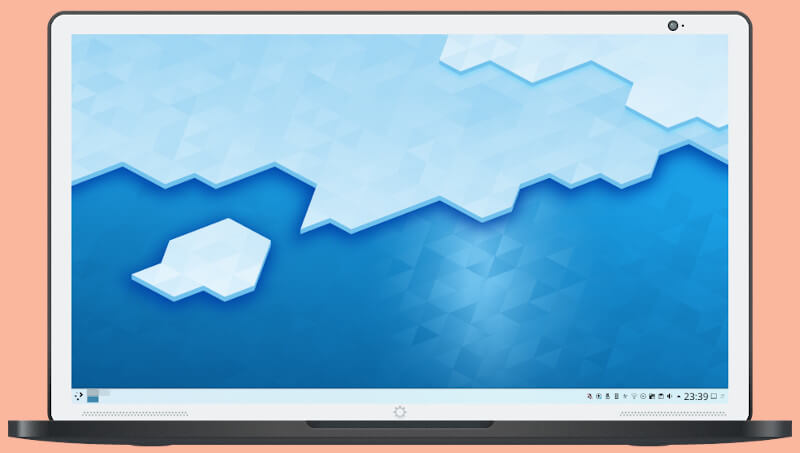
As a native Plasma 5 desktop environment/framework, the Qt 5 toolkit is an added package to the mix with other compatible KDE software bundled along for your convenience. Any new user will find KDE Neon satisfactory especially if stability is at the highest on their list of priorities for an operating system.
8. openSUSE KDE
Advocates of openSUSE are often keen to point out the rigid stability of the operating system and how it’s seemingly one of the best-kept secrets in the Linux community.
openSUSE does its own thing like pretty much other distributions on this list but it’s hard to argue with a system that is practically miles ahead when compared with other Linux systems on the basis of stability.
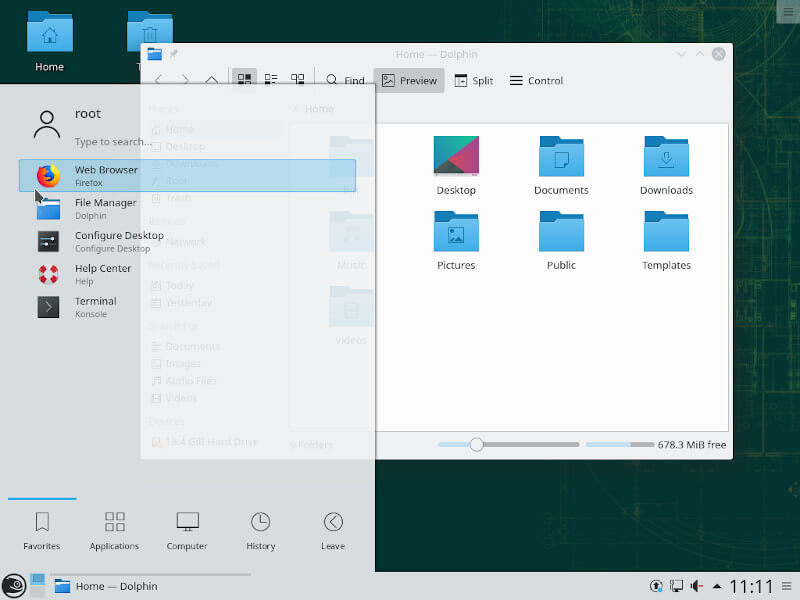
openSUSE thrives in the Linux ecosystem as a productivity monster and that combined with the KDE Plasma 5 desktop means you are getting the best of both worlds and an immense value post-installation of the operating system.
Conclusion
KDE is no new player in the game of desktop environments and with a rock-solid development team behind the framework, it goes without saying that just about any system out there with KDE continues to benefit from the work that has been done to create a genuinely unique experience that’s second to none.
GNOME is certainly a force to reckon with but is in an entirely different league of its own hence the glorious presence KDE continues to enjoy within the Linux ecosystem. Have you had a shot at KDE in the past? Let us know.


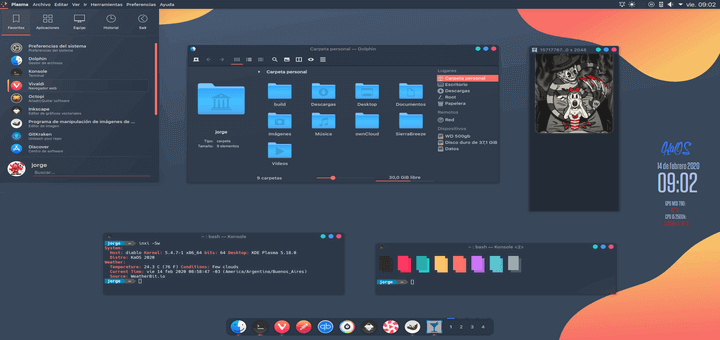
I am using Kubuntu, so far it is the most satisfying Linux os, stable, and very happy with the ability of desktop customization, but one thing is that it is a bit hungry for RAM, I only with 4GB RAM, overall is the recommended retro, will try out another KDE retro.
I have given KDE a chance, multiple times. Still, I have never liked it, and I love traditional desktops. I have found it less intuitive and hard to tailor to my liking. I also like and use many KDE programs on my Mate OS (i,e. Kpat, Krita, K3B, Kid3). For now, I will stick with Mate, then Cinnamon, the Xfce, and KDE would be the last choice. Yet I like a lot of the software, so want KDE to succeed.
Yes, but Ubuntu is based on Debian, so it’s not wrong.
MX is not based on Ubuntu! It is based on Debian.